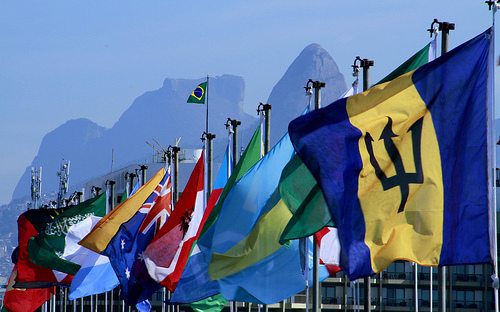Rio+20 ended as a tale of three cities: the non-ambitious hub of the formal negotiations, the optimistic (but fragile) suburb of green growth aspirations and the outpost of frustrated civil society hopes. We believe investors should focus on the following four themes for the future.
1. Setting course with Sustainable Developments Goals: Governments agreed to set in motion negotiations for a package of Sustainable Development Goals to be agreed by 2015. Importantly, the SDGs were first promoted by a developing country – Colombia – and could help to broaden the scope of the existing Millennium Development Goals. The timeframe also fits with the parallel negotiations for a global climate deal.
2. Recognising the economic value of nature: Natural capital was one of the key themes of Rio+20. In the official conclusions, governments agreed on the need ‘for broader measures of progress to complement GDP’, and alongside this over 50 countries and nearly 90 companies agreed on specific initiatives to factor in the value of natural assets into decision-making. At Rio, the Inclusive Wealth Report highlighted the varying balance of natural, produced and human capital in the country-level asset mix (Chart 1) and showed that in many countries natural capital has been declining in the past two decades, and in the case of the UK and Saudi Arabia this is due to the depletion of fossil fuels (Chart 2). The challenge ahead is to find practical ways of incorporating natural capital into long-term investment strategies and asset allocation.
3. Leveraging finance for sustainable development: Compared with the original Rio summit, finance was a new arrival at Rio+20. Governments agreed on the need for a Sustainable Development Financing Strategy, while a leadership group of 25 companies adopted the Principles for Sustainable Insurance, a sister initiative to the influential Principles for Responsible Insurance. The importance of sustainability disclosure for investor decision-making was underscored, and Brazil’s BM&F BOVESPA stock exchange published the first results of its ‘report or explain’ requirement for it slisted companies. Six of the world’s largest development banks announced plans to expand their USD93bn annual investment in sustainable development, including a commitment to expand the market for ‘green bonds’ (see our report, Bonds and climate state: state of the market in 2012, 23 May 2012). A broader group of eight development banks also announced plans to provide USD175bn for sustainable transport over the next 10 years. One test ahead will be the extent to which public finance can be scaled up to de-risk projects and so leverage private capital from investors (see our note, Rio+20: From billions to trillions, 19 June 2012).
4. Passing the baton of leadership to emerging economies: Rio+20 followed hard on the heels of the Los Cabos G-20 Summit in Mexico, which highlighted the potential for green growth to stimulate longterm prosperity. With the EU beset with financial concerns, the US focused on presidential elections and Japan struggling to deliver a post-Fukushima strategy, Rio+20 showed that emerging economies were now making their mark on the global sustainability agenda. One small but potentially significant signal of how fast geopolitical roles are changing was China’s decision to announce at Rio that it will be providing cUSD32m for a three-year international project to help small island countries, least developed countries and African countries tackle climate change.
The next international milestone to test how these results from Rio+20 will impact the climate economy will take place at the Doha climate conference (CoP18) from 26 November to 7 December 2012.
Wai-Shin Chan is an HSBC Climate Change Analyst & Nick Robins is Head of HSBC Climate Change Centre of Excellence
This is a reproduction of the HSBC research report, “Rio +20: Emerald linings amid the gloom.” Reproduced with permission.










